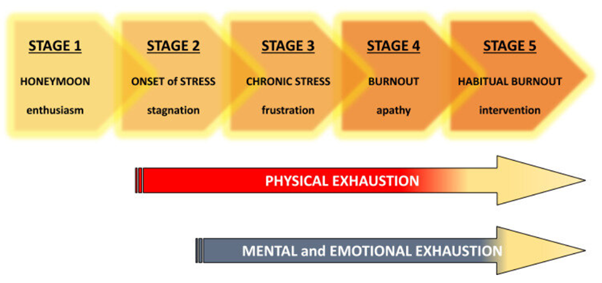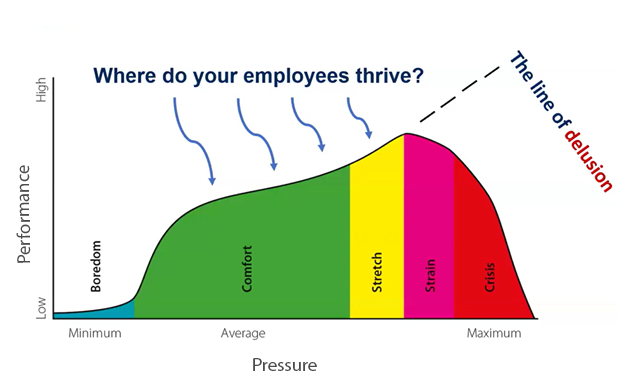From wellbeing washing to proactive prevention: How HR can tackle the burnout crisis
Burnout isn't just a buzzword - it's a workplace crisis. More than 10 million UK employees are off work due to burnout each year. According to MetLife, this costs businesses over £700 million in sick days. As HR professionals, leaders and people managers, says Debbie Kleiner, it's time we stopped relying on yoga and helplines as surface-level fixes and tackled the root causes head-on.
The key to moving from burnout to blossoming is proactive prevention, not just reactive support. Yet many organisations are still operating in a state of wellbeing washing - throwing out initiatives without really measuring what's working or who it's reaching. We can't fix what we don't fully understand. So, how do we spot burnout before it takes hold? And, more importantly, what can HR do to prevent it?
The World Health Organization defines burnout as an "occupational phenomenon" resulting from unmanaged workplace stress. It's marked by emotional exhaustion, reduced performance and growing detachment from work.
Understanding burnout
Burnout usually doesn't strike overnight. It creeps in slowly - persistent fatigue, emotional detachment, mental fog - until suddenly it's a full-blown crisis. And far too often, we ignore those early warning signs in ourselves and others.
The World Health Organization defines burnout as an "occupational phenomenon" resulting from unmanaged workplace stress. As shown in the diagram below, it's marked by emotional exhaustion, reduced performance and growing detachment from work. While not classified as a medical condition, its effects on both mental and physical health are profound, linked to higher risks of heart disease, anxiety, depression and chronic illness.

Who's most at risk?
Burnout is often the output of poorly managed psychosocial risks - things like excessive workload, lack of autonomy, poor management and toxic work relationships. These are design flaws in the way work is structured and managed.
And burnout does not affect everyone equally. Research from BMC Psychology shows that individuals high in neuroticism or low in agreeableness and conscientiousness are more susceptible. A recent Deloitte Women @ Work study found burnout especially prevalent among younger women and those in middle-management roles, with 61% reporting burnout. This makes a clear case for tailored wellbeing strategies that address diverse needs, not a one-size-fits-all approach.
Unchecked burnout doesn't just reduce productivity, it creates a ripple effect across the organisation. It lowers morale, increases turnover, disrupts team dynamics and often leads to long-term health issues.
Add to that the psychological phenomenon of pluralistic ignorance - where everyone assumes others are coping simply fine - and it is no wonder burnout goes unnoticed until it's too late.
Common causes of burnout
Several core issues drive burnout: excessive workload, lack of role clarity, low autonomy and insufficient support. When expectations are unclear, or boundaries constantly breached, people begin to feel helpless and undervalued. Micromanagement and poor leadership only magnify these feelings.
Work-life balance isn't about time, it's about energy. Employees who can't disconnect or are always "on" will burn out faster. And neglecting basic self-care - sleep, exercise, hobbies - only fuels the fire.
HR has a critical role in reversing this. We can:
- empower managers to lead, not just manage;
- build cultures of trust and autonomy;
- reinforce boundaries and respect personal time; and
- promote regular recovery - through breaks, time off and flexibility.
Spotting the signs
Burnout is often silent at first. Early warning signs include constant fatigue, irritability, loss of enthusiasm, difficulty concentrating and feeling emotionally distant. Colleagues may withdraw, become disengaged or start expressing helplessness with phrases like "I'm running on empty".
HR and managers need to actively observe and check in - not just on output, but on how people are feeling. Pulse surveys, one-to-ones and open conversations are essential tools for recognising the signs before they become symptoms. The pressure-performance curve (below) was first developed by psychologists Robert Yerkes and John Dodson in 1908.

The hidden damage
Unchecked burnout doesn't just reduce productivity, it creates a ripple effect across the organisation. It lowers morale, increases turnover, disrupts team dynamics and often leads to long-term health issues. Gallup's latest global research found that one in four leaders feel burned out "often or always". When managers burn out, it impacts their teams even more.
A culture that normalises overwork, unclear expectations and constant urgency will eventually break down. That's why tackling burnout isn't just about employee wellbeing, it's about business performance.
A more strategic approach to wellbeing
So, how do we shift from burnout to blossoming?
First, we must move away from generic, tertiary interventions - helplines, wellbeing apps, yoga classes - and instead redesign the work experience itself. Burnout is usually an organisational issue, not just an individual one.
We must understand our enablers and inhibitors. What helps our people thrive? What gets in the way? Do our managers inspire or stress their teams out? Are employees empowered or micromanaged? What data are we using to track this - and are we asking the right questions?
To design effective strategies, HR can consider a combination of:
- the Maslach Burnout Inventory (measuring emotional exhaustion and cynicism);
- the Health & Safety Executive Management Standards Indicator Tool (measuring workplace stress risks); and
- the Utrecht Work Engagement Scale (measuring engagement, meaning and energy).
This blended approach gives a deeper picture, beyond symptoms, of the real causes and implications.
Manager burnout
One major cause of stress in organisations is the behaviour and capability of line managers. And they're often the most burned-out group themselves. If we want to tackle burnout, we need to start here.
HR plays a key role in shaping this environment. But success depends on full leadership buy-in - and not just in words, but in behaviours. According to recent research, only half of leadership teams are committed to tackling burnout in practice. That must change.
Managers need support, not just responsibility. That means:
- equipping them with stress awareness and mental health training;
- coaching them on how to hold supportive one-to-ones;
- providing structured onboarding and leadership development; and
- encouraging them to role model healthy work habits.
When managers thrive, teams are more likely to flourish too.
Embedding burnout prevention into culture
Wellbeing should not just be an initiative, it must be embedded into culture. That includes:
- flexible working policies that support real work-life balance;
- clear communication around expectations and boundaries;
- leadership that consistently prioritises wellbeing;
- recognition of effort and contribution; and
- opportunities for personal growth and autonomy.
HR plays a key role in shaping this environment. But success depends on full leadership buy-in - and not just in words, but in behaviours. According to recent research, only half of leadership teams are committed to tackling burnout in practice. That must change.
Turning insight into action
To blossom, organisations need to do more than just care: they need to act. That means making burnout measurable, support accessible and wellbeing a shared priority.
Ask yourself: What do employees love about working here? What's getting in their way? How do we turn inhibitors into enablers?
It's not about perfection, it's about progress. By creating psychologically safe, empowering environments, HR can lead the way from burnout to balance.
Burnout isn't an inevitable outcome, nor is it a permanent state. It's a signal that something needs to change. With the right approach, people and organisations can recover, recharge and truly blossom.
What to read, watch and listen to next
Rethinking what leadership looks like - and how HR can help
Podcast: Five steps to save yourself from burning out - help for struggling HR professionals
Webinar: Supporting men's health in the workplace - a holistic approach to wellbeing
